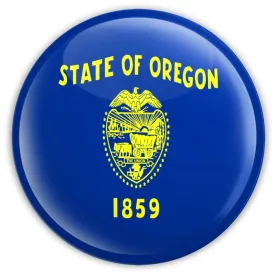From 2020 through 2021, wildfires burned more than 1.5 million acres of land in Oregon. To put things in perspective, the area that burned was approximately seven times the size of New York City. Wildfire smoke can contain hazardous small particles that can penetrate deep into the lungs, causing a range of health problems. On September 11, 2020, wildfire smoke caused Portland’s air quality to rank worst among major cities across the world with an air quality index (AQI) of 349, a level that the U.S. Environmental Protection Agency characterizes as “hazardous.” Unsurprisingly, Oregon is taking measures to address the health risks associated with exposure to wildfire smoke, and the state is expected to soon join California in adopting related regulations.
On January 28, 2022, the Oregon Occupational Safety and Health Division (Oregon OSHA) filed a Notice of Proposed Rulemaking, announcing that it is promulgating rules to address employee exposure to wildfire smoke. According to Oregon OSHA’s recent announcement, the rules “are needed to help protect workers from the hazards of PM2.5 [or fine particulate matter] stemming from major wildfire events, which are projected to increase in frequency and duration as well as increase the number of ‘unhealthy air quality days’ in affected areas of Oregon.” The proposed rules “outline air quality index (AQI) trigger levels for specific requirements that will reduce employee workplace exposure to unhealthy and hazardous air quality from wildfire emissions.”
If enacted, the rules would apply to all public and private employers but would likely impact Oregon’s agricultural, forestry, and wine industries the most. Notably, enclosed buildings with a mechanical ventilation system and enclosed vehicles with an air filtration system would be exempt from the rules. Employees working exclusively from home would also be exempt.
Under the proposed rules, employers would be required to conduct an exposure assessment at the start of each shift to monitor employee exposure to AQI levels greater than or equal to 101. Employers would also be required to provide annual wildfire smoke training for employees who may be exposed to AQI levels greater than or equal to 101, and maintain written or electronic training records. In addition, the proposed rules would require that employers develop a system for communicating wildfire smoke hazards at various levels of AQI that also allows employees to report various related concerns.
Oregon OSHA’s proposed rules would also require employers to implement certain engineering and administrative controls aimed at reducing employees’ PM2.5 (or fine particulate matter) exposure to less than 101 AQI:
-
“[T]emporarily relocating outdoor workers to available indoor areas or vehicles where the air is adequately filtered”;
-
“[T]emporarily relocating outdoor [workers] to another outdoor location with better air quality”; and/or
-
“Changing employee work schedules to when better air quality is forecasted.”
When AQI levels are at or above 101, the proposed rules would require employers to make National Institute for Occupational Safety and Health (NIOSH)-approved filtering facepiece respirators available for voluntary use at no cost to the employee. If employee exposure is at or above 251 AQI, the proposed rules state that employers “must ensure employees wear NIOSH-approved filtering facepiece respirators.” If employee exposure equals or exceeds 501 AQI, the proposed rules state that employers “must ensure employees wear the NIOSH-approved respirators,” as well as implement a respiratory protection program that complies with the Respiratory Protection Standard (29 CFR 1910.134) or a Wildlife Smoke Respiratory Protection Program. Each program must include the following three key requirements: (1) employee training on the proper use of respirators; (2) routine user seal checks of filtering facepiece respirators; and (3) procedures on storing, maintaining, and replacing such respirators.
Oregon OSHA is allowing interested stakeholders to provide public comment as part of the rulemaking process. Stakeholders can register for Oregon OSHA’s virtual public hearings occurring March 2, 2022, through March 4, 2022. Stakeholders can also call 1-833-604-0884 or 503-947-7396 and leave a voicemail with their comments. The agency anticipates adopting permanent rules in April 2022. In anticipation of Oregon OSHA’s adoption of some form of wildfire smoke regulations, many Oregon employers are already analyzing the feasibility of implementing safety processes and exploring the purchase of large quantities of respirators for 2022 and 2023.





 />i
/>i

